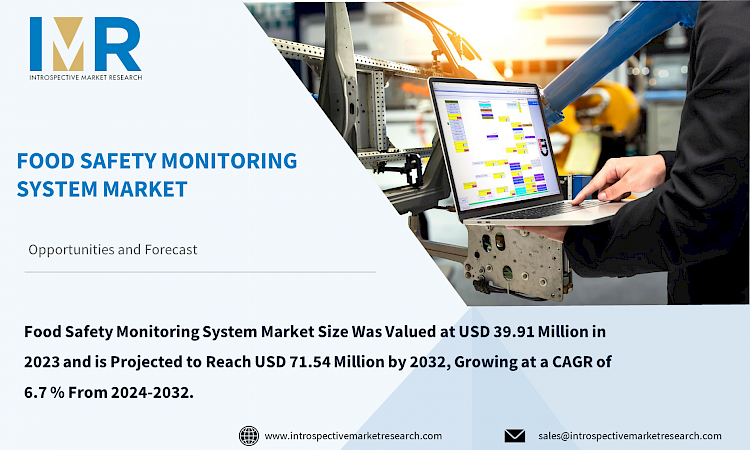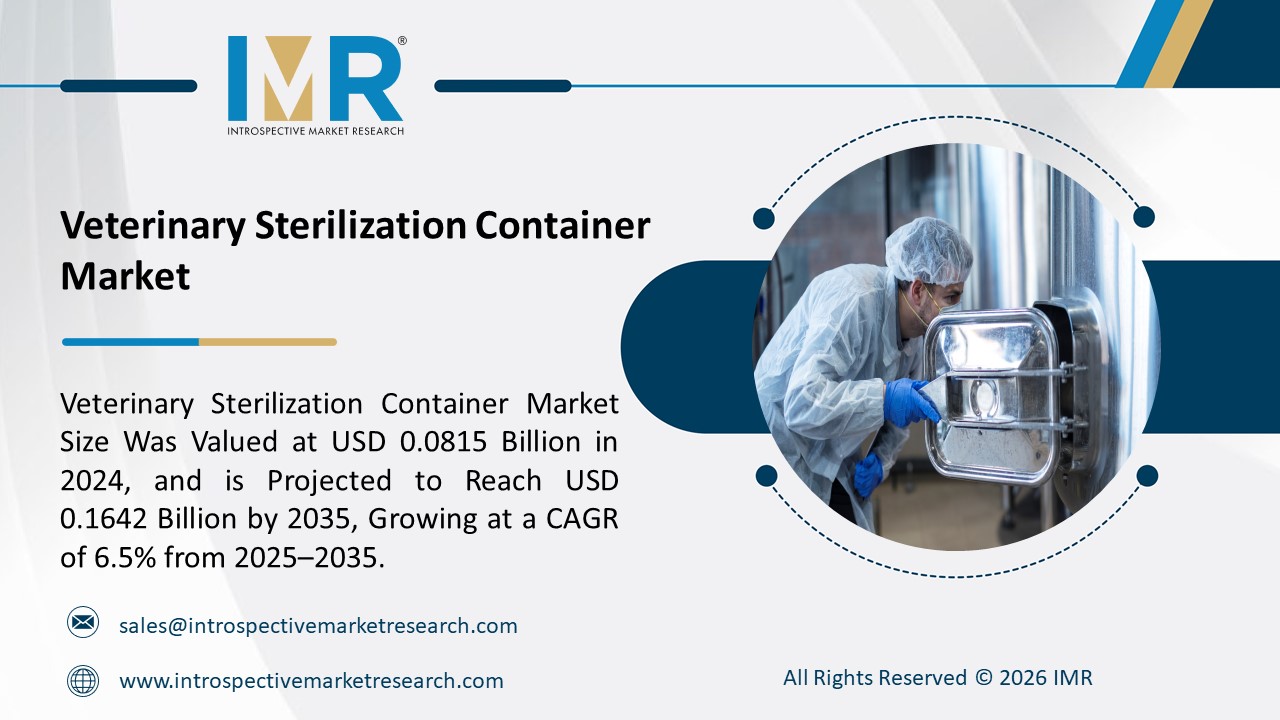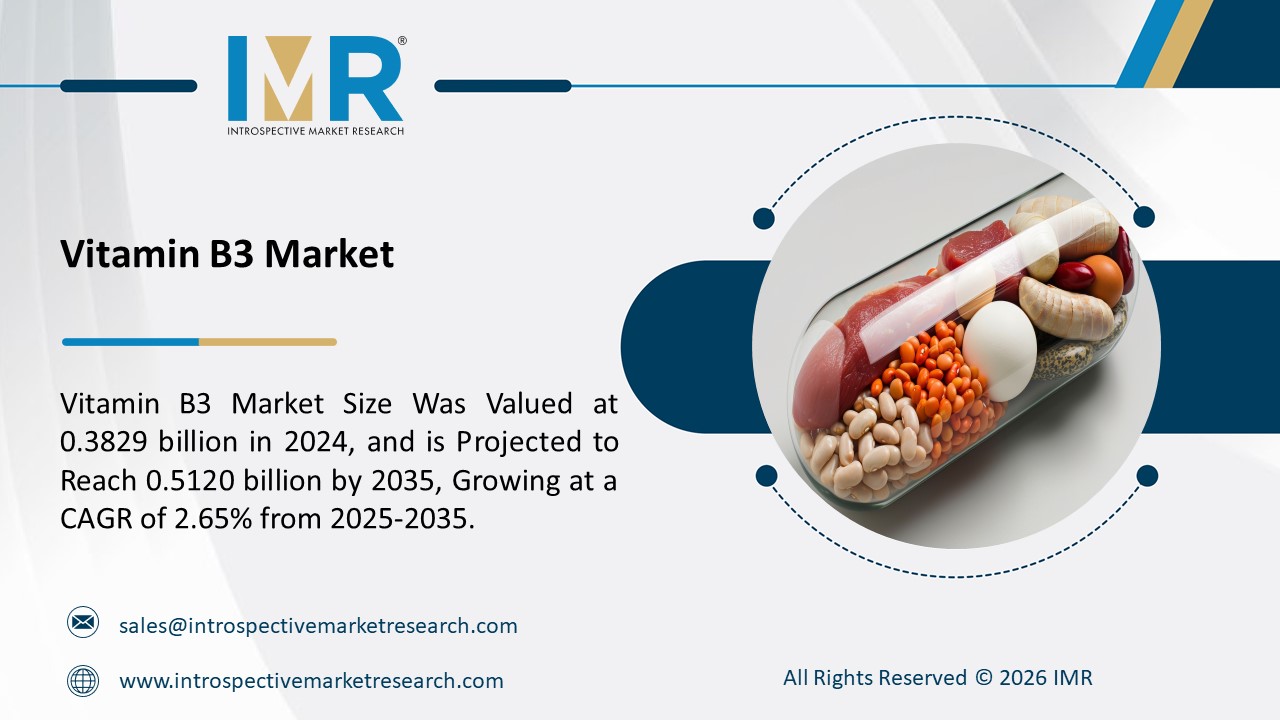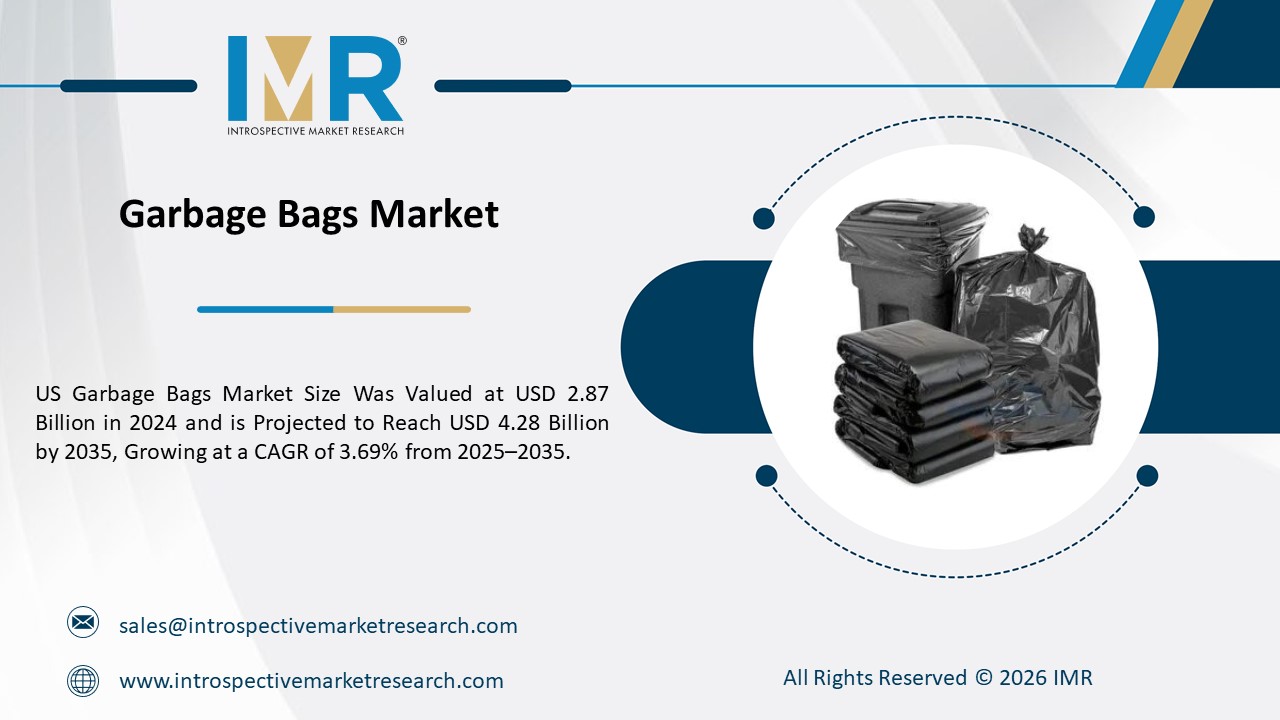
According to a new report published by Introspective Market Research, titled, ?Food Safety Monitoring System by Application and Packaging Type: Global Opportunity Analysis and Industry Forecast, 2023?2032,?
Food Safety Monitoring System Market Size Was Valued at USD 39.91 Million in 2023 and is Projected to Reach USD 71.54 Million by 2032, Growing at a CAGR of 6.7 % From 2024-2032.
Food Safety Monitoring System is implemented to support the safety status of our food production and supply and it ensures that food safetyhazards are under control. Food safety monitoring, in this context, seeks to ensure that potential hazards do not become uncontrolled and subsequently result in illness or injury to food consumers. The aspect under food safety monitoring is for GMP programs or PRP programs which say allergenic materials and non-allergenic materials should be placed separately, then it is necessary to install some system to keep check about the same. It is an integration of a HACCP-based food safety program implemented in your food business, along with CCP monitoring or monitoring of critical limits. Globally the monitoring process is regulated by the food safety regulations. It includes approval certifications from various agencies including SQF, BRC, FSSC 22000, IFS, Global GAP, etc.
Legal regulations for public health safety and industry standards are considered important market drivers for food safety monitoring systems. Governments all over the world impose regulations to check the safety and quality of food products consumed by the public. These rules often mandate strict monitoring and control measures throughout the food production and distribution chain. Safety standards set up by institutions like the Food and Drug Administration (FDA) in the United States or the European Food Safety Authority (EFSA) in Europe, work as benchmarks for food safety practices. These standards ensure legal adherence and also gain consumer trust. Food safety monitoring systems play a vital role in helping food producers and distributors meet these legal obligations and industry standards. These systems use technologies such as sensors, data analytics, and traceability solutions to check various aspects of food production, processing, and transportation. By continuously monitoring critical parameters like temperature, humidity, and microbial contamination, these systems help to avoid foodborne problems and maintain the integrity of food products.
Awareness about food concerns after COVID-19 creates an opportunity for this market to grow. The pandemic highlighted the need for a food safety monitoring system to avoid the impact of various health risk factors including contamination, improper handling, and spoilage. The rising awareness amongst the people has increased the need for installing the food safety monitoring system. The aftermath of COVID-19 underscored the critical importance of a comprehensive food safety monitoring system to mitigate health risks stemming from contamination, mishandling, and spoilage. Heightened public awareness post-pandemic has amplified the imperative for implementing such monitoring mechanisms. Recognizing the potential threats to health and well-being, individuals and authorities alike are increasingly advocating for robust systems to ensure the safety and integrity of the food supply chain. This growing awareness underscores the necessity of proactive measures to safeguard public health and restore trust in food safety standards, emphasizing the pivotal role of effective monitoring and regulatory frameworks.
Global Food Safety Monitoring System, Segmentation
The Type segment is further classified into Software and hardware. Among these, the Hardware sub-segment accounted for the highest market share. In 2022, the hardware segment held the largest share of the food safety monitoring system market. This segment includes vital components like sensors and detectors, which are essential for effective monitoring and control. These devices help detect contaminants, pathogens, and other potential hazards in the food supply chain. With robust hardware solutions, real-time data collection and analysis are possible, enabling quick responses to security threats. Advanced technologies such as IoT-enabled devices further enhance traceability and monitoring capabilities. Hardware plays a crucial role in strengthening food safety infrastructure by providing reliability and accuracy in identifying risks. It ensures the integrity of food products from the point of production to consumption.
End-user:
The end-user segment is further classified into Food Processing Companies, Food Retailers, Food Manufacturers, Restaurants, Bakeries, and Beverages Companies. Among these, the Food Manufacturing Segment sub-segment is anticipated to show the fastest growth by 2031. Food safety monitoring systems are paramount in ensuring the quality and safety of food products, with food manufacturing companies playing a central role in their development and implementation. These companies are driven by regulatory compliance, as strict guidelines govern the safety of food products, prompting heavy investments in monitoring systems to avoid penalties and maintain a positive reputation. Mitigating risks associated with foodborne illnesses and product recalls is another critical factor driving their investment in monitoring technologies. With substantial financial resources and technical expertise at their disposal, food manufacturers can deploy sophisticated monitoring systems throughout their supply chains. By exercising control over various stages of production and distribution, these companies can manage food safety risks effectively. Moreover, meeting consumer expectations for safe and high-quality products necessitates robust monitoring efforts to reassure customers and maintain trust. While food manufacturing companies dominate food safety monitoring systems due to these reasons, collaboration among regulatory agencies, research institutions, consumer advocacy groups, and technology providers remains essential for the continued advancement and effectiveness of food safety initiatives.
Region:
The Food Safety Monitoring System in North America is projected to show the fastest growth by 2031. Strict regulatory frameworks ensure stringent adherence to food safety standards, significant investments in advanced technology and infrastructure, and a strong culture of consumer awareness regarding food safety. Additionally, the presence of key market players and research institutions contributes to innovation and the development of cutting-edge solutions. Combined, these factors position North America as a leader in the food safety monitoring system market, driving growth and maintaining a competitive edge in the global landscape.
Some of The Leading/Active Market Players Are-
- Neogen Corporation (United States)
- 3M Food Safety (United States)
- Thermo Fisher Scientific (United States)
- Eurofins Scientific (Luxembourg)
- Romer Labs (Austria)
- M?rieux NutriSciences (France)
- Bio-Rad Laboratories (United States)
- Hygiena (United States)
- Charm Sciences (United States)
- Intertek Group plc (United Kingdom) and Other Active Players
Key Industry Developments
- In November, 2022, The Food Safety Modernisation Act by the U.S. Food and Drug Administration (U.S. FDA)
The Final Rule, titled ?Requirements for Additional Traceability Records for Certain Foods?, was published. As part of having a food safety plan or program, using GS1 Standards is one of the options outlined by the FDA to improve traceability and help meet FSMA requirements by the January 20, 2026 deadline.
Key Findings of the Study
- Legal obligations for public health safety and industry standards are the major market drivers for the food safety monitoring safety market.
- The Food Safety Monitoring System helps to prevent illnesses by focusing food-manufacturing attention and activities on preventing or minimizing exposure of the consumer to pathogens creating potential opportunities for the market to grow.
- Over the forecast period, North America is anticipated to assert dominance in the market due to several factors.





